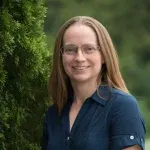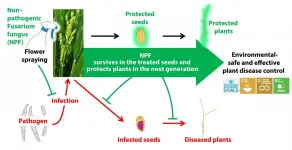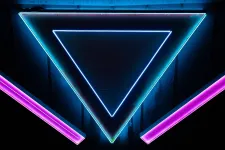The Emory MVA COVID-19 vaccine approaches inducing protective immunity via modified vaccinia Ankara (MVA), a harmless version of a poxvirus that is well-known for its use in HIV/AIDS vaccines. Like the Moderna and Pfizer COVID-19 vaccines, the Emory MVA COVID-19 vaccine induces strong neutralizing antibodies, which support the immune system's ability to fight infections. The Emory MVA COVID-19 takes protection several steps further, starting with inducing killer CD8 T cells in addition to the neutralizing antibodies, providing a multi-pronged approach to halting SAR-COV-2. In addition, the Emory researchers say the vaccine is easily adaptable to address disease variants, can be used in combination with existing vaccines to improve their ability to combat variants and has the potential to be equally effective with a single dose.
Lead researcher Rama Amara, PhD, built the Emory MVA COVID-19 vaccine based on his more than 20 years of experience working with MVA and animal models to develop an HIV/AIDS vaccine. He and his Yerkes-based research team tested two MVA SARS-CoV-2 vaccines in mice. One of them, MVA/S, used the complete spike protein of coronavirus to induce strong neutralizing antibodies against SARS-CoV-2. In addition, this vaccine also induced a strong killer CD8 T cell response.
According to Amara, a researcher in Yerkes' Division of Microbiology and Immunology and the Emory Vaccine Center (EVC) as well as a Charles Howard Candler professor of microbiology and immunology at Emory School of Medicine (SOM), "Generating neutralizing antibodies is an important component of a successful COVID-19 vaccine because the antibodies can block the virus from entering the body's cells. It's as important to activate CD8 T cells that can clear infected cells, so this allows us to approach halting the virus two ways simultaneously. The CD8 T cells also provide ongoing value because they are key to working against other variants of the virus, especially if antibodies fail."
Based on the encouraging study results in mice, the Amara team advanced the MVA/S COVID-19 vaccine into a study with 10 rhesus monkeys at Yerkes. For five animals, the researchers gave two doses of the vaccine a month apart and then challenged them with SARS-CoV-2. The researchers also challenged a group of five monkeys that received a placebo MVA vaccine, which did not contain any genes from the COVID-19 virus. The virus grew to high levels in the lungs of all five placebo animals by the second day, but was below detection limits in all five MVA/S-vaccinated animals. "Comparing the virus in vaccine and placebo groups provided clear results the MVA/S vaccine is safe and effective against SARS-CoV-2," says Amara. "These results are even more promising because the MVA/S-vaccinated animals did not show any signs of inflammation in the lungs such as what medical professional are seeing in humans who have COVID-19."
Rafi Ahmed, PhD, director of the EVC and an international expert in how vaccines work, credits Amara for his comprehensive approach. "Based on decades of research, we know MVA vaccines are safe, effective and can be used in combination with other vaccines, including mRNA vaccines, to enhance the immune system's response. The Emory MVA COVID-19 vaccine, which builds on the MVA HIV vaccine Dr. Amara co developed that recently completed phase 2a human clinical trials, scores multiple goals by producing neutralizing antibodies, inducing killer CD8 T cells and preventing lung inflammation. This multi-layered approach to developing a COVID-19 vaccine is well positioned to fight the current strain of SARS-CoV-2 as well as the variants we're beginning to see."
"My research team and I as well as the entire Yerkes community are excited to move the Emory MVA COVID-19 vaccine forward," says Amara. "The world needs multiple COVID-19 vaccines to meet the demand. Our vaccine can stand alone as well as complement the available mRNA versions. It's a perfect combination of scientific expertise and collaboration, and commitment to improving human health."
Amara will continue his work on COVID-19 vaccines. One study focuses on the effectiveness of a single dose of the Emory MVA COVID-19 vaccine. A single dose could prove especially valuable to ensure vaccination compliance and, therefore, effectiveness, which can help drive a reduction in COVID-19 diagnoses and hospitalizations. Amara received two FastGrant awards to supplement his NIAID grant and expedite this follow-up COVID-19 research.
In a second study, Amara's team is focusing on inducing broader T cell responses capable of fighting new COVID-19 variants and other human coronaviruses. "The newly designed vaccines aim to induce T cells against multiple other genes of the virus in addition to targeting the spike protein," says Amara. "This requires inserting multiple genes of the coronavirus into the vaccine, which can be challenging. MVA, however, is well-suited for this because of its unique capacity to carry extra genes."
INFORMATION:
Amara's research team includes Nandakishore Routhu, PhD (postdoc), Sailaja Gangadhara, PhD (research associate), Narayanaiah Cheedarla, PhD (postdoc), and Venkata Satish Bollimpelli, PhD (postdoc), all four co-lead authors, as well as Ayalensh Shiferaw (research specialist). Amara and his team worked in close collaboration with the laboratories of Mehul Suthar, PhD, and Steve Bosinger, PhD. Suthar is an assistant professor in the Emory SOM Department of Pediatrics and an EVC researcher. Bosinger is an assistant professor in the SOM Department of Pathology & Laboratory Medicine, an EVC researcher as well as a researcher in Yerkes' Division of Microbiology and Immunology, and director, Yerkes Nonhuman Primate (NHP) Genomics Core.
In addition to the NIAID grant 3R01AI148378-01S1, the MVA vaccine study reported in this release is supported in part by the Yerkes National Primate Research Center base grant P51OD011132 from the NIH Office of the Director, Office of Research Infrastructure Programs.
Grant amounts (direct + indirect):
3R01AI148378-01S1 $582,625/for 2 years
P51OD011132 $10,540,602/yr
Fast grant 1, $250,000
Fast grant 2, $350,000
Note: The amounts listed above are for the full grants. Only a portion of the P51 will support infrastructure needs of the COVID-19 vaccine study reported in this news release.
Dedicated to discovering causes, preventions, treatments and cures, the Yerkes National Primate Research Center (NPRC), part of Emory University's Robert W. Woodruff Health Sciences Center, is fighting diseases and improving human health and lives worldwide. The center, one of only seven NPRCs the National Institutes of Health (NIH) funds, is supported by more than $74 million in research funding (all sources, fiscal year 2018). Yerkes researchers are making landmark discoveries in microbiology and immunology; neurologic diseases; neuropharmacology; behavioral, cognitive, and developmental neuroscience; and psychiatric disorders. Since 1984, the center has been fully accredited by the AAALAC International, regarded as the gold seal of approval for laboratory animal care. For more information about Yerkes and the seven NPRCs, visit NPRC.org and follow us at @NPRCnews.





